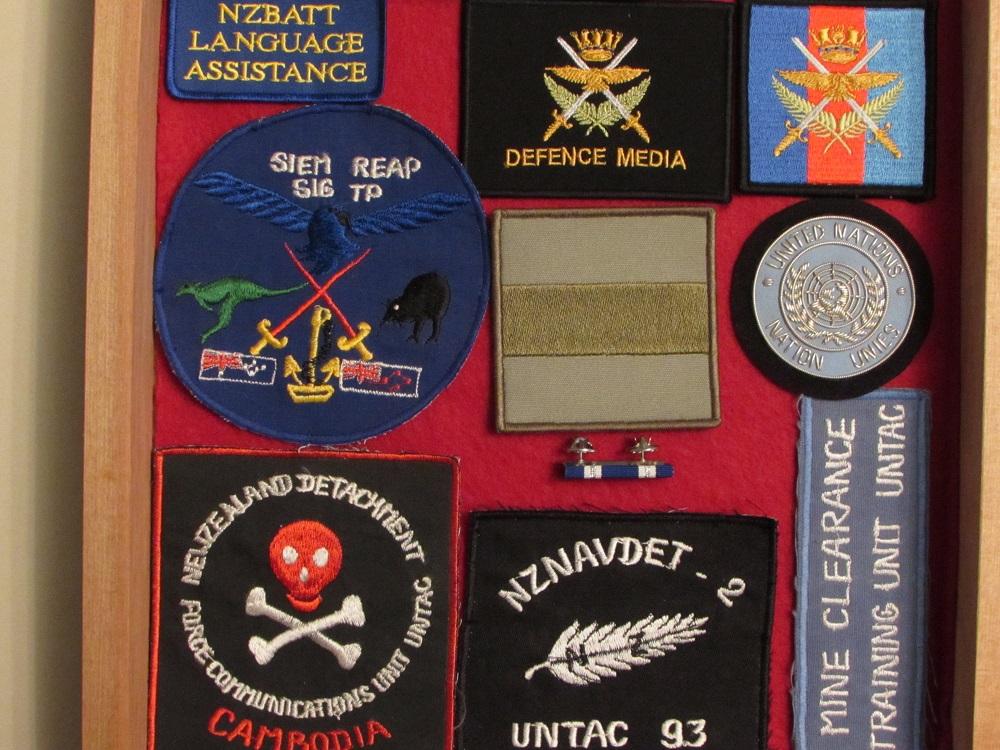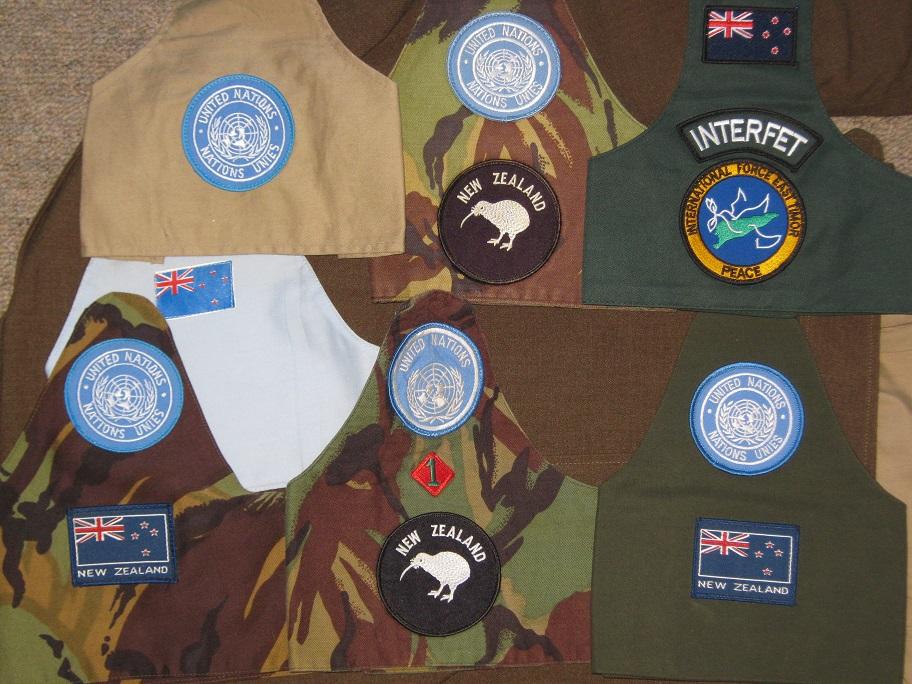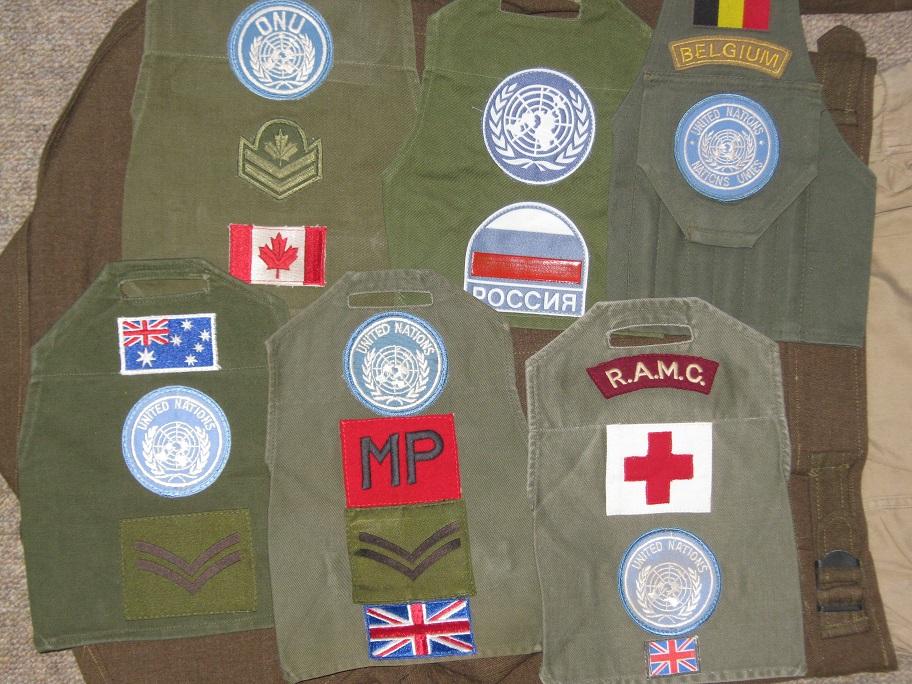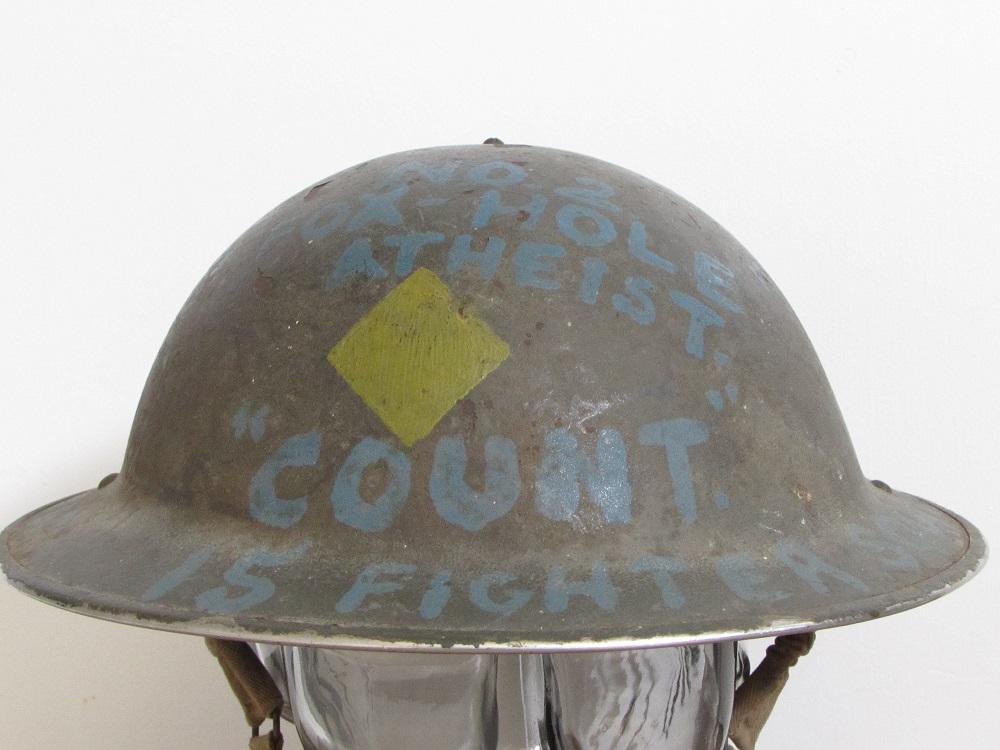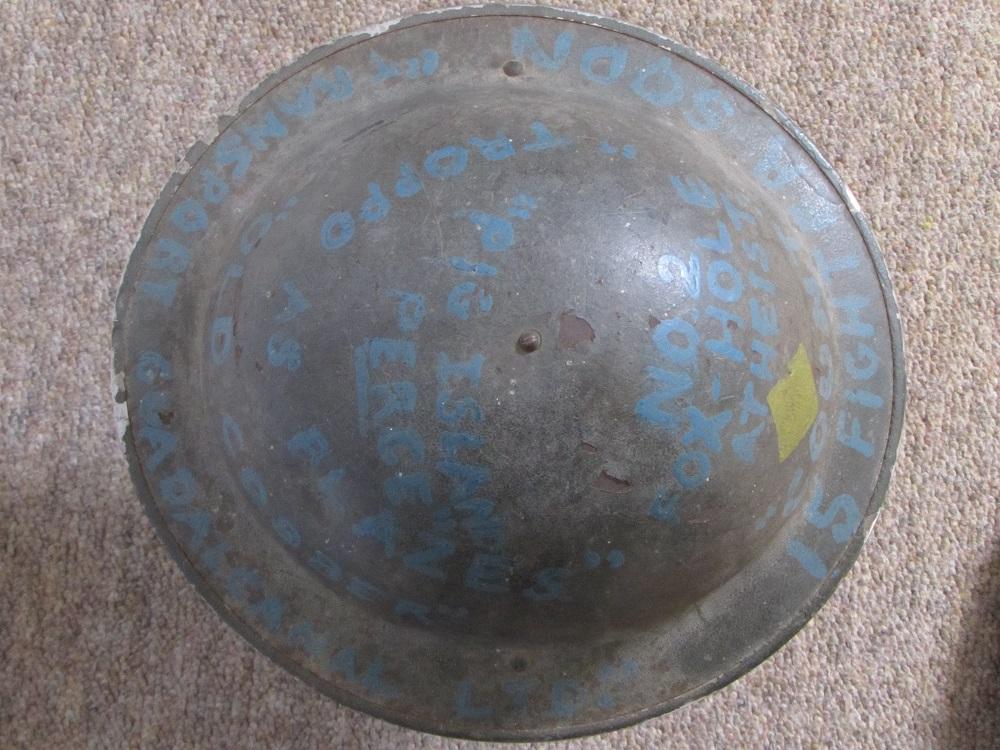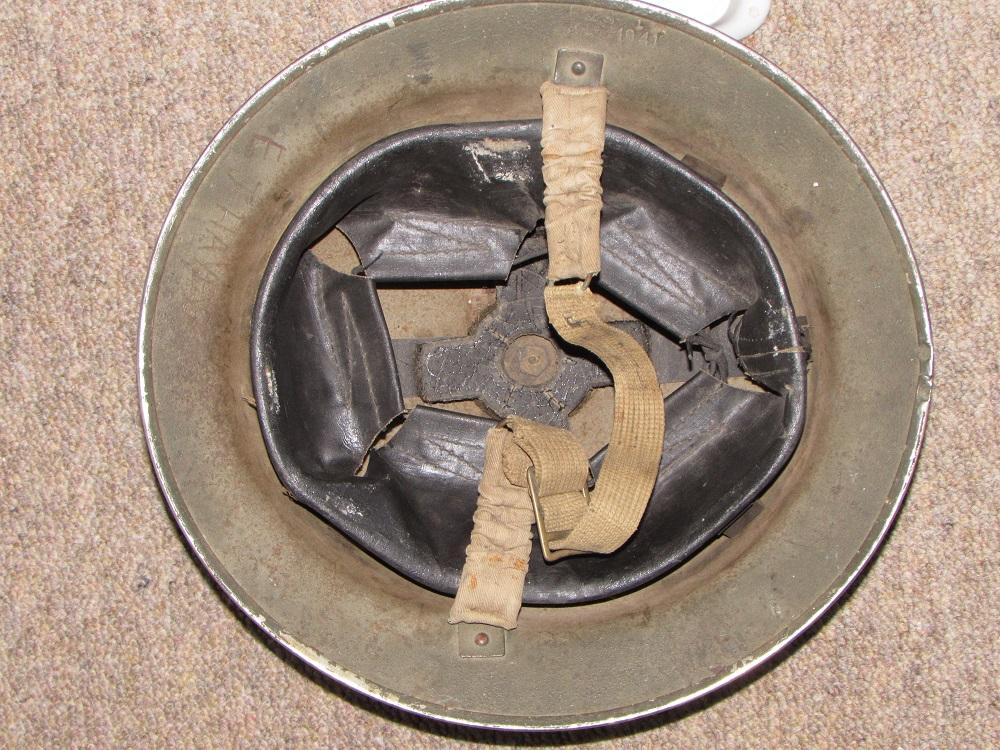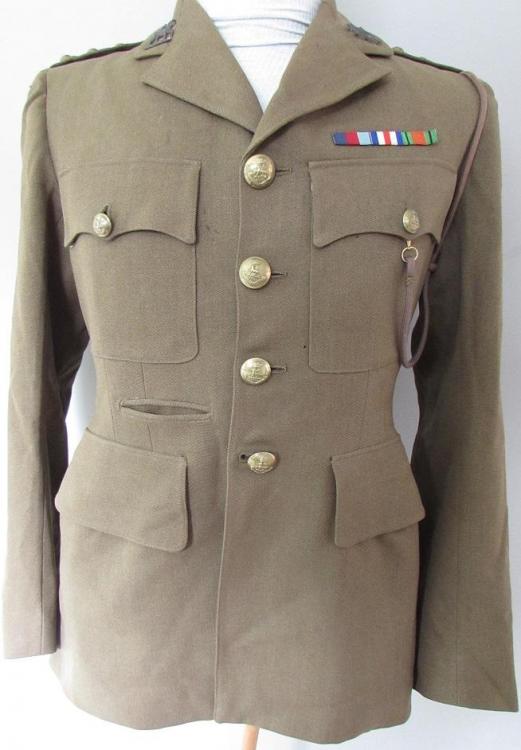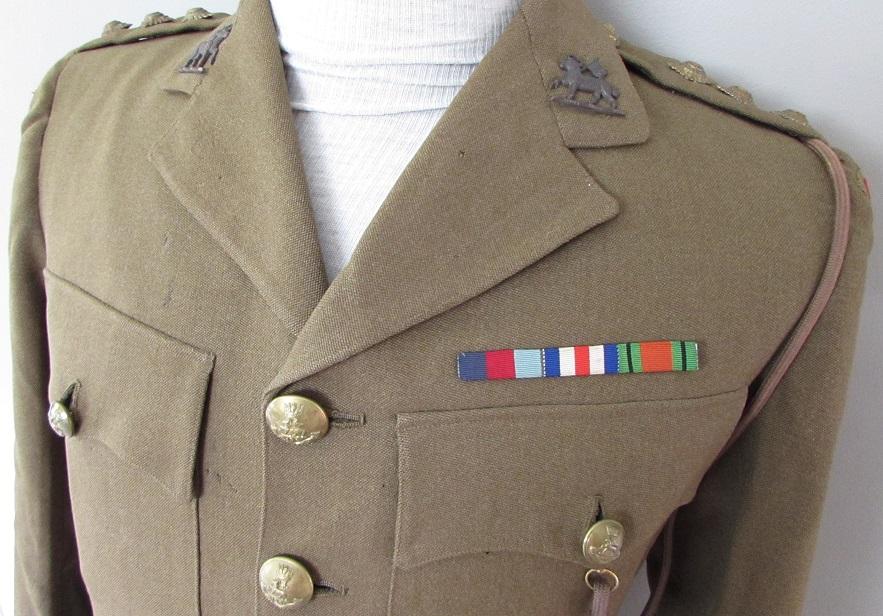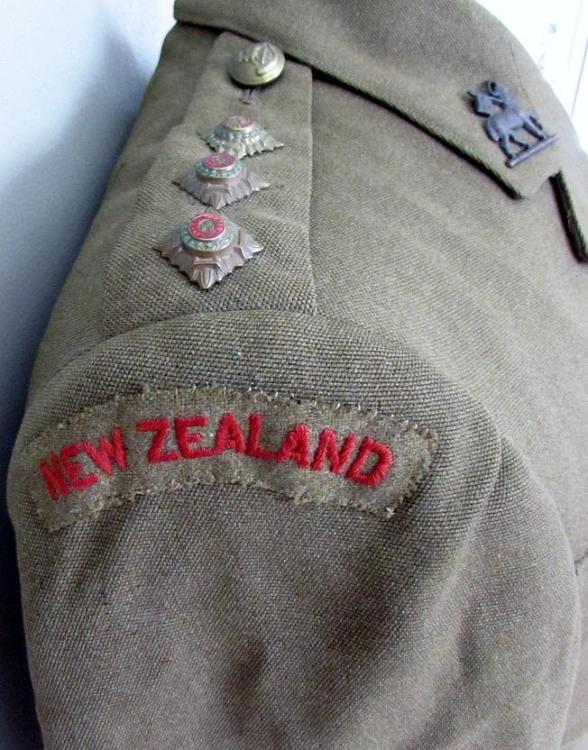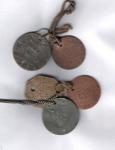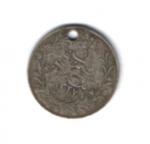
ChrisB
Past Contributor-
Posts
87 -
Joined
-
Last visited
ChrisB's Achievements
-
Bit late but here are some Cambodian made UNTAC badges for the ANZAC signals detachment plus a mine clearance tab, again Cambodian made. Here is some of my UN/Peacekeepers Brassards
-
Hi Tony, Yes it is his name that is scratched into the brim. I am fairly sure it is a Brit helmet but, as you say, it would have been really cool if it was a NZ made helmet (still looking for one of those NZP marked ones, but even here they are hard to find). Still I'm really happy to have this one in the collection. Cheers Chris
-
On a bit of a roll today as it's a rainy Sunday here in NZ and what better to do on a rainy day than show off some of your collection. Been hitting the Commonwealth - Kiwi/Aussie topic a bit today so thought I would change it up a bit and show a BD blouse that might be of interest to UK uniform collectors. Here is my converted 1940 pattern Battle Dress Blouse. The collar has been converted to an open front and all the buttons changed for leather. The collar conversion has been done rather professionally by adding extra material to the collar so the once high collar now lays nice and flat. The top two button holes have also been sewn up the extra material also nicely covers the evidence of these up too. This particular uniform was originally owned by Winston Malbourne CRAIG . Winston was born in Australia in 1913 and at some point moved to NZ. In June 1940 he enlisted in the NZ Army. His occupation on enlistment was carpenter and this might be why he was transferred in July 1940 to the 15th Forestry Company, NZ Engineers. On 27 August 1940 he embarked for overseas service, with the rest of the Forestry Company, on board the ship Empress of Japan. They trans-shipped at Bombay, India onto SS Ocades an set sail for the United Kingdom arriving there in November 1940. In May 1943 he was selected to attend a Officer Cadet Training Unit. In September 1943 he was married to Irene BONNER at the parish church Woking, Surrey and on the 15 September 1943 was transferred to the British Army (Pioneer Corps). This transfer was confirmed 7 January 1944. His service with the British Army was from January 1944 till July 1946, he then seems to have returned to NZ and lived here for the rest of his life, he died in 1989. As well as the Battle Dress Blouse I have also been lucky enough to pick up his Service Dress tunic and trousers. The style of Service dress is a little different as it is an example of the Austerity Pattern introduced in 1942 in an effort to conserve materials and production time. The new Austerity pattern tunics no longer had box pleated breast pockets, though it still has the scalloped pocket flaps, and the lower pockets were now of the internal type just with a flap instead of the previous patch pocket style. The sleeves were plain. This new pattern tunic was introduced under “Army Council Instruction (ACI) 501, dated March 7th 1942”. By early 1945, the situation had improved and under “ACI 340” military tailors were once again allowed to supply tunics of the pre 1942 pattern, but only to newly commisioned Officers or to those who truly needed a new replacement tunic due to their old one being worn out. The ribbons are for the 1939-45 Star, France & Germany Star and Defence Medal. The collar badges are for the Queen’s Royal Regiment. The collar badges are the standard bronze for officers and appear to be stamped rather than cast. The Queen’s Royal Regiment can trace its beginnings back to 1661 when it was raised specifically to garrison the recent acquisition of Tangier. After a number of amalgamations, the last being in 1992, the lineage of the Queen’s Royal Regiment is continued by the Princess of Wale’s Royal Regiment (Queen’s & Royal Hampshire’s).
-
This particular Mk II helmet was issued to and worn by NZ42578 Earl John HAYES. He was Born 05 January 1919 and enlisted in the Royal New Zealand Air Force (RNZAF) 16 January 1942 at the age of 23 and 11 days. His occupation on enlistment was as a junior Linesman/Driver in the Post and Telegraph Department based in Lower Hutt. His training in NZ was based at Harewood, Wigram and Rongotai (where he did his Driver (Petrol)/Mechanic course at The Technical Training school). Was posted overseas from 18 October 1942 to 02 December 1943 serving with the 15th Squadron from 22 October 1942 till 06 June 1943 when he was posted first to 1 Fighter Maintenance Unit and then on the 04 October 1943 to 1 Servicing Unit where he served till he returned to NZ. In the Pacific he was stationed in Guadalcanal (30 May 1943-4 October 1943) and Espiritu Santo (04 October 1943-02 December 1943). When he enlisted his trade was as a Flight Mechanic but he was re-mustered on the 16 July 1942 as a Driver (Petrol) Mechanic. After his promotion to Corporal on 01 June 1944 he was again re-mustered as a Mechanic (Motor Transport) on 01 November 1944. He discharged from the RNZAF 12 April 1945. He was awarded the 1939-45 Star, Pacific Star, Defence Medal, War medal 1939-45 and NZ war Service Medal. He died at Lower Hutt Hospital on the 30 October 1987. This helmet is unusual not only for its being covered in “trench Art”, but because the information written on the helmet also provides a narrow date range as to when it was done. Given that it has “15 Squadron Transport Guadalcanal Ltd” pained along the brim it would seem to date this helmet in the 30 May to 6 June 1943, period when he was serving with the 15 Squadron on Guadalcanal. 15th Fighter Squadron RNZAF was formed 01 June 1942 at Whenuapai. It served in Tonga, Guadalcanal, New Georgia, Espiritu Santo, Bougainville and Green Island. The squadron was equipped with Kittyhawk and latter F4U Corsair fighters. The Squadron was disbanded in November 1945. The 15 Squadron flew more sorties than any other NZ Fighter Squadron in the Pacific theatre of World War II. Seem to be having uploading of image problems. Will try again latter.
-
Have been on this site for awhile so thought I would show one of my most recent purchases. Picked this RAF Officers Service Dress up at a local auction. Nice padded WW2 period, RAF pilots wing and ranked to a Squadron Leader who was awarded the Air Crew Europe Star with “France & Germany” clasp. At the outbreak of World War Two, New Zealand did not have the capacity to completely train aircrew in any great numbers. Prior to the instigation of the Empire Training Scheme, where New Zealand air crew had their provisional training at home and finished their training in another Commonwealth country, usually Canada (Of the 131,000 trainees who graduated in Canada, New Zealanders formed 5.3%) many kiwi’s (approx. 401) took a short service commission in the RAF and finished their flight training in the United Kingdom. There were 134 trained pilots who relinquished their RNZAF commissions and accepted a five year short service commission in the Royal Air Force. Of all the 401 kiwis who sailed to the UK, 213 did not survive the war to make the trip back to NZ. Fortunately, William George Charles GASQUOINE, the original uniform owner, did make it back. Written in the lining of one of the sleeves is the name GASQUOINE and the two id discs have the same surname with the initials WG and RAF service number 45703. The research done by the previous owner came up with the answer that this uniform belonged to William George Charles GASQUOINE. I did a quick “Google” search and found a number of London Gazette notices confirming RAF service and the name and service number. At the end of their five year RAF short service commission, most men accepted a commission back into the RNZAF. I have managed to locate William’s RNZAF file which, along with all his RNZAF service, details all of his RAF postings. William George Charles GASQUOINE was born in 1918 in Wellington, New Zealand. He grew up in Nelson, going to Nelson Collage until leaving in 1936 and taking up a Drafting cadetship with the Lands and Survey Department where he stayed until the outbreak of World War Two. In October 1939 William joined the RNZAF and was awarded his flying badge, 10 February 1940. He left NZ on the 26 April 1940 and on arriving in the UK in June, accepted his commission into the RAF. After continuing his flight training with 10 and 12 Operational Training Units he was posted to 78 Squadron (78 Squadron was used to drop British airborne troops into Italy in February 1941-Operation Colossus, the first use of Brit airborne troops). After two months with the squadron he was posted to 1 Anti Aircraft Co-operation Unit (AACU) in November 1940. While with the 1 AACU he took command of “G” flight Cleave and “Q” flight at Aberporth. In August of 1942 he was posted to 42 Operational Training Unit where he was an instructor, going on to be the Chief Flying Instructor and Flight Commander. At the end of his time with the OTU he was posted to 487 (NZ) Squadron flying de Havilland Mosquitos. 487 (NZ) Squadron is perhaps best well known for its bombing attack on Amiens Prison (Operation Jericho) in February 1944, William was not involved in this operation but he was involved in the retaliatory attacks after the execution of 30 SAS prisoners of war who were members of the behind the lines Operation Bulbasket (June-August 1944). On 1st August 1944, 23 Mosquito FB VI (21 & 487 Squadron) attacked Caserne des Dunes barracks, Poitiers. William was the pilot (navigator was Flying Officer P.E. PRIOR) of Mosquito-EG-K, PZ164 which was latter lost in the Aarus attack, 31 October 1944 when it lost a engine after flying through a bomb blast and was forced to land in Sweden and was set alight by the crew before it could be captured. At the end of his time with the squadron, in September, he was posted to staff duty roles, first with the 2nd Tactical Air Force Headquarters and then with Supreme Headquarters Allied Expeditionary Force. In August 1945 he had his final overseas posting to 1 Ferry Unit, Pershore where he qualified as a flying instructor “C” category. In May 1946, after six years 22 days overseas and 240 operational flying hours, he left the UK and arrived back in New Zealand on the 30 June 1946. He was finally discharged from the RNZAF on the 19 January 1947 and returned to civilian life. The types of aircraft he flew were; de Havilland Tiger Moth, Miles Hawk, Avro Tutor, Miles Mentor, Percival Proctor, Avro Anson, Fairey Gordon, Victor Vildebeeste, Fairey Battle, Armstrong Whitley III & V, Hawker Henley, Hawker Hurricane, de Havilland Mosquito VI, XVI and XX. One of the things I discovered on doing a little research on William was that in January 1943 he was awarded a Kings Commendation for Bravery. Interestingly, the Kings Commendation for Brave Conduct (1916-1952) was awarded in three forms. From 1916-1942, it was awarded just as a certificate similar to the ones issued with Mention in Dispatches. In 1943, they were issued as a gold and red plastic pin – backed badge. From 1944 onwards, the badges were not issued and instead, a silver laurel leaf was issued for civilians and worn on the Defence Medal if held, or on the tunic if not. For armed forces, an oak leaf identical to the M.I.D. was issued and worn on the War Medal 1939-45. The Kings commendation would, I guess, have been awarded while he was posted to 42 OTU. Does anyone have any info on why he was awarded it? All I can find is the Gazette notification (01/01/1943). Cheers Chris Here is the full uniform:-
-
Hello Hoopa, I can advise you that for the New Zealand medals; New Zealand GSM Afghanistan, New Zealand GSM Iraq & New Zealand Operational Service Medal, there is no certificates, documents etc formally presented to the service person . If you want to have a look at the medal warrant/regulation you can have a look at the NZDF Medals website: http://medals.nzdf.mil.nz/category/index.html. Unfortunately the latest NZGSM's including the (Iraq 2015) do not show up on this site yet (the NZDF can sometimes be a bit slow with information). Normally at a unit level medal presentation they will read out a short description of medal eligibility taken from the website plus a bit more info about the service person if it is a Long Service award. For my sins I work for the NZDF's Medal Office (now called "Personal Archives & Medals")
-
Unofficial coin I.D. disk.
ChrisB replied to ChrisB's topic in Great Britain: Militaria: Badges, Uniforms & Equipment
Hello Jef, The CE at the top of the tag is the religious denomination, in this case Church of England. As this chap is Army Service Corps the MT might stand for Motorised Transport. A nice ID disk as well thanks for showing it. I will have to see if I can find some more as I quite like them. Hi Paul, Do you have a photo of the tank corps disk? That would be a very nice one to own. Cheers Chris -
Unofficial coin I.D. disk.
ChrisB replied to ChrisB's topic in Great Britain: Militaria: Badges, Uniforms & Equipment
The last set is the modern laser engraved issue ID disks used by the NZDF today. The top disk shows what they look like fresh out the box with no wear to them. The bottom set was issued to a chap who served in Bosnia and Afghanistan (and probably many other places but still have a bit of research to do). Cheers Chris -
Unofficial coin I.D. disk.
ChrisB replied to ChrisB's topic in Great Britain: Militaria: Badges, Uniforms & Equipment
Second lot are WW2 issue. The top set look as though they are a replacement set, as the personal information has not been stamped, but rather the info has just been scratched into the surface of the disks. These were issued/used by a chap in 3rd Division in the Pacific. The bottom set is the more common officially stamped disks. -
Unofficial coin I.D. disk.
ChrisB replied to ChrisB's topic in Great Britain: Militaria: Badges, Uniforms & Equipment
As I have shown the unofficial ID disk I might as well show the official ones as well. First up typical Kiwi WW1 ID disks. Both these sets are early ID disk sets, as I believe the zinc disk was done away with as it caused skin complaints with some of the soldiers and in the end they just ended up wearing the two fibre disks. -
Have wanted an example of one of these for a while and managed to get one last week in an online auction, it arrived today and I am chuffed with it. These erased coin ID disks seem to be a fairly common way for kiwis (and probably other commonwealth troops) to beat the deficiencies of the issue fibre I.D. disks. I have seen the odd French or European coin pop up in an online auction every now and again but what makes this one cool is that it is Turkish coin. It originally belonged to 8/2837 Percy Campbell Austin of Dunedin who embarked for overseas service as part of the 7th reinforcements, Otago Infantry Battalion on the 9th October 1915. I might be stretching it but because it's a Turkish coin and because he left NZ in October, Percy might have picked up this coin from Gallipoli before the allied evacuation in December 1915. Would be very interested in seeing some more of these coin ID disks if anyone else has one to show.
-
A simple little medal.
ChrisB replied to ChrisB's topic in Great Britain: Orders, Gallantry, Campaign Medals
Ed and Tony, I could not agree more with both your sentiments. When I can I try and find out as much as possible about the original owners of my military items. It seems to make these little bits of cloth and metal more human and as you say Ed, sometimes we as collectors are the last people to remember that the original owners ever existed. Thanks very much for your comments chaps. Cheers Chris


